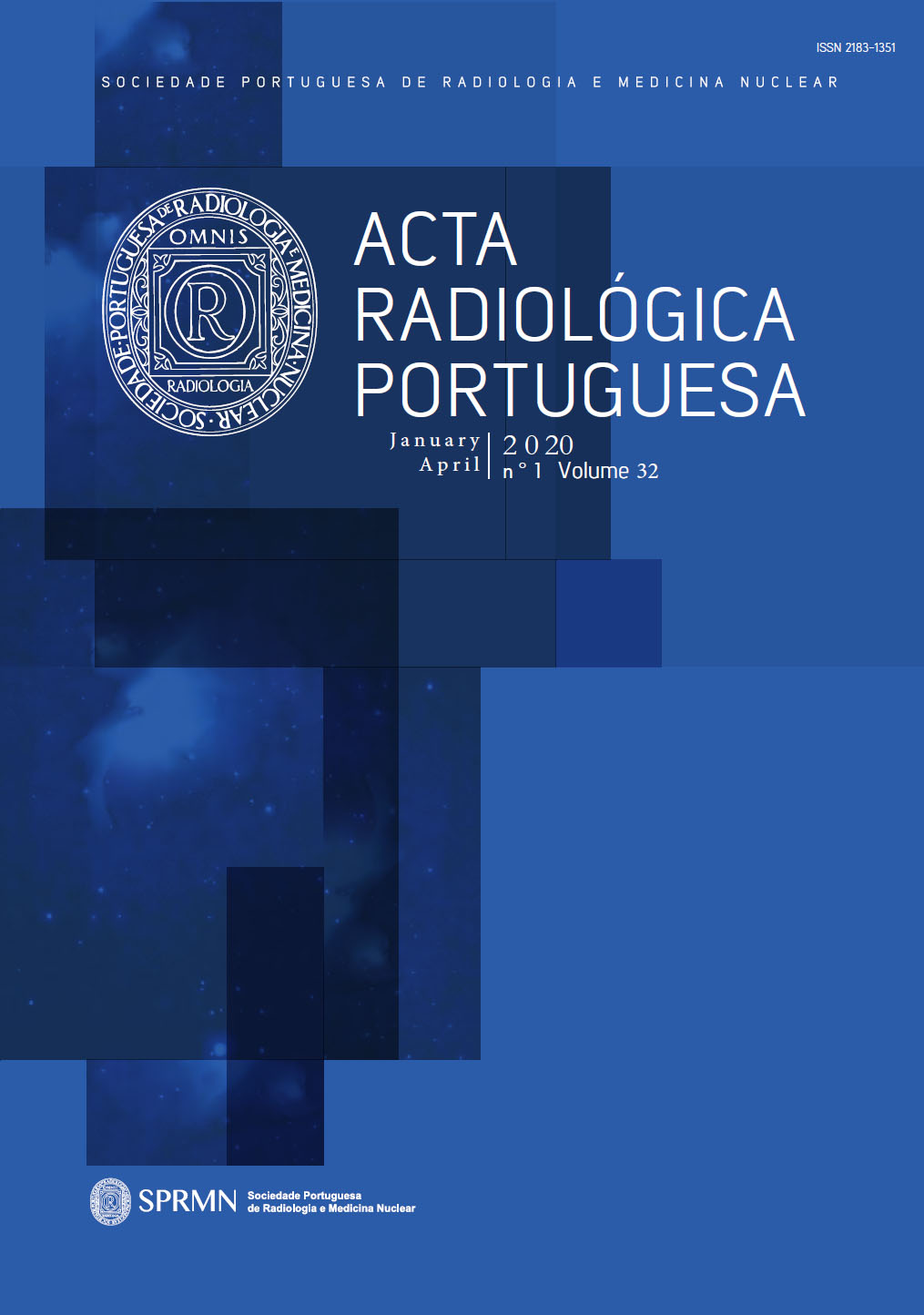Pelvic GPS (Gynaecological Positioning System) – A Rational Approach to Correctly Locate the Origin of Large Female Pelvic Tumours
DOI:
https://doi.org/10.25748/arp.14667Abstract
The origin of large female pelvic masses may be difficult to recognize. Gynaecological organs are more commonly involved, but all other organs and structures within the pelvis have to be considered in a rational imaging approach to female pelvic tumours. The first step is to identify the normal anatomy and recognize the peritoneal folds and recesses. The patterns of displacement should then be evaluated in order to determine if the tumour is intra or extra-peritoneal. After these initial steps, the radiologist should look for organ-specific signs that may be particularly useful tumours originated in the ovary, tubes and uterus. The authors aim to review the main radiological signs available for determining the origin of female pelvic masses and to develop a rational algorithm to identify the place of origin of undetermined tumours on computed tomography (CT) and magnetic resonance imaging (MRI).
References
Foshager MC, Hood LL, Walsh JW. Masses simulating gynecologic diseases at CT and MR imaging. RadioGraphics 1996; 16(5):1085–1099. doi:10.1148/radiographics.16.5.8888392.
Nishino M, Hayakawa K, Minami M, Yamamoto A, Ueda H, Takasu K. Primary retroperitoneal neoplasms: CT and MR imaging findings with anatomic and pathologic diagnostic clues. RadioGraphics 2003; 23(1):45–57. doi:10.1148/rg.231025037.
Moyle PL, Kataoka MY, Nakai A, Takahata A, Reinhold C, Sala E. Nonovarian cystic lesions of the pelvis. RadioGraphics 2010; 30(4):921–938. doi:10.1148/rg.304095706.
Tirkes T, Sandrasegaran K, Patel AA, et al. Peritoneal and retroperitoneal anatomy and its relevance for cross-sectional imaging. RadioGraphics 2012; 32(2):437–451. doi:10.1148/rg.322115032.
Healy JC, Reznek RH. The peritoneum, mesenteries and omenta: normal anatomy and pathological processes. Eur Radiol 1998; 8(6):886–900. doi:10.1007/s003300050485.
Rajiah P, Sinha R, Cuevas C, Dubinsky TJ, Bush WHJ, Kolokythas O. Imaging of uncommon retroperitoneal masses. RadioGraphics 2011; 31(4):949–976. doi:10.1148/rg.314095132.
Cunat JS, Goldman SM. Extrinsic displacement of the ureter. Semin Roentgenol 1986; 21(3):188–200.
Chhabra A, Williams EH, Wang KC, Dellon AL, Carrino JA. MR neurography of neuromas related to nerve injury and entrapment with surgical correlation. AJNR Am J Neuroradiol 2010; 31(8):1363–1368. doi:10.3174/ajnr.A2002.
Meissnitzer M, Schlattau A, Vasvary I, Hergan K, Forstner R. Mimics of ovarian cancer in imaging. In: ECR 2012 / EPOS.; 2012:C–0983. doi:10.1594/ecr2012/C-0983.
Shalev J, Blankstein J, Mashiach R, et al. Sonographic visualization of normal-size ovaries during pregnancy. Ultrasound Obstet Gynecol 2000; 15(6):523–526. doi:10.1046/j.1469-0705.2000.00137.x.
Bazot M, Deligne L, Boudghene F, Buy JN, Lassau JP, Bigot JM. Correlation between computed tomography and gross anatomy of the suspensory ligament of the ovary. Surg Radiol Anat 1999; 21(5):341–346.
Saksouk FA, Johnson SC. Recognition of the ovaries and ovarian origin of pelvic masses with CT. RadioGraphics 2004; 24 Suppl 1:S133–46. doi:10.1148/rg.24si045507.
Lee JH, Jeong YK, Park JK, Hwang JC. “Ovarian vascular pedicle” sign revealing organ of origin of a pelvic mass lesion on helical CT. AJR Am J Roentgenol 2003; 181(1):131–137.
Kim JC, Kim SS, Park JY. “Bridging vascular sign” in the MR diagnosis of exophytic uterine leiomyoma. J Comput Assist Tomogr 2000; 24(1):57–60.
Weinreb JC, Barkoff ND, Megibow A, Demopoulos R. The value of MR imaging in distinguishing leiomyomas from other solid pelvic masses when sonography is indeterminate. AJR Am J Roentgenol 1990; 154(2):295–299. doi:10.2214/ajr.154.2.2105017.
Veloso Gomes F, Dias JL, Lucas R, Cunha TM. Primary fallopian tube carcinoma: review of MR imaging findings. Insights Imaging 2015; 6(4):431–439. doi:10.1007/s13244-015-0416-y.
Ghattamaneni S, Bhuskute NM, Weston MJ, Spencer JA. Discriminative MRI features of fallopian tube masses. Clin Radiol 2009; 64(8):815–831. doi:10.1016/j.crad.2009.03.007.
Outwater EK, Siegelman ES, Chiowanich P, Kilger AM, Dunton CJ, Talerman A. Dilated fallopian tubes: MR imaging characteristics. Radiology 1998; 208(2):463–469. doi:10.1148/radiology.208.2.9680577.
Timor-Tritsch IE, Lerner JP, Monteagudo A, Murphy KE, Heller DS. Transvaginal sonographic markers of tubal inflammatory disease. Ultrasound Obstet Gynecol 1998; 12(1):56–66. doi:10.1046/j.1469-0705.1998.12010056.x.
Downloads
Published
Issue
Section
License
CC BY-NC 4.0


